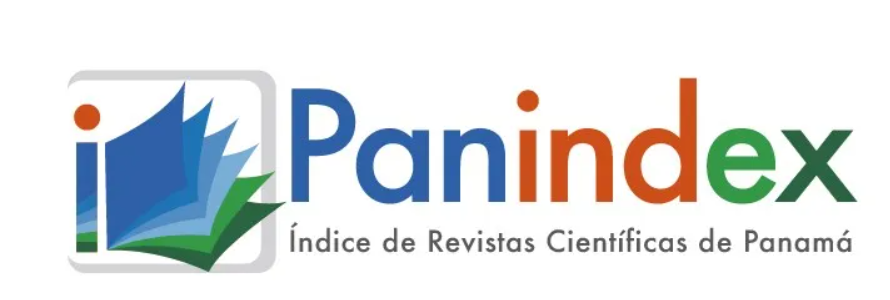The content of the publications and the links suggested in them are the sole responsibility of the authors and not of the METROPOLITAN UNIVERSITY OF EDUCATION, SCIENCE AND TECHNOLOGY (UMECIT) or CATHEDRA magazine. They are protected by international copyright laws just as the UMECIT and CATHEDRA logos, hence their reproduction is totally prohibited
This work is licensed under a Creative Commons Attribution-NonCommercial-NoDerivatives 4.0 International License.
The authors maintain the copyright and transfer the right of the first publication to the journal, with the article registered with Creative Commons Attribution-NonCommercial-NoDerivatives License, which allow others They can download the works published in this magazine and share them with other people, as long as their authorship is recognized, but they cannot be changed in any way nor can they be used commercially.
Authors are recommended to include their work in social networks such as Researchgate and institutional repositories once the article or visible fact has been published on the journal page, without forgetting to include the digital document identifier and the name of the journal.



Abstract
Being the geomatics a term that arises for the first time in 1969, by the French Dubuisson, the definitions that are given to him at present maintain that initial essence, being one of them, according to the Royal Academy of The Language: “science and technology of the capture, analysis, interpretation, distribution and use of geospatial data “, “Field of activities that, using a systemic approach, integrates all the means to acquire and process spatial data required as part of scientific, administrative, legal and technical activities that are concerned with the production and management of spatial information”, This discipline in recent years has been developed to a large extent in various areas, the incorporation of the use of GPS (global positioning system), belonging to the United States and that after arising for exclusive use in the military and security field, opened its doors to public use, bringing with it a range of multiple utilities. Similarly, the rest of the branches of geomatics, such as topography, cartography, remote sensing and photogrammetry, are equally interesting for the development of multiple activities in the forensic area. In various countries and in view of the scientific nature of the different areas used in criminalistics and forensic sciences, the various branches of geomatics have been incorporated, such as topography to obtain data in the field for different crimes and proceedings, from the initial ocular inspection in the place where an event occurs, verification of data in cases related to land litigation issues or fixation by methods such as the use of polygonal to establish affected areas in a case against the environment. Photogrammetry has also come to be incorporated into this range of interesting tools used to generate data that are then presented to support and serve as illustrative demonstrative evidence, since the advent of Digital Photogrammetry in the 90s, one of the features most notable of this line is its growing popularization and socialization; that is, the possibility of developing low cost lines available to any type of user. Currently, one of these possibilities is the use of unmanned Aerial Vehicles (UAVs), popularly known as “drones”, with low cost to obtain aerial images that allow the derivation of cartographic products whose applications extend to different fields of work. The incorporation of all these existing forms within the ranges offered by geomatics have not escaped our country, where in recent years’ tools related to this discipline have been used in the field of topography and illustration through the use of georeferenced data, as well as the incursion in the use of unmanned aerial platform more recently.
Keywords
References
Araque Rojas F., Flores Araque F., De Sá Rodríguez J., Pineda M., Rebolledo Wueffe, R. (2014). Manual De Capacitación Básica En Geomática Para Las Comunidades Organizadas.
Asociación Iberoamericana para la Difusión de la Ciencia y la Tecnología (en línea). España. Disponible en: http://www.dicyt.com/viewNews.php?newsId=29810
Código Procesal Penal, Ley 63 de agosto de 2008, Panamá.
Comunidad ISM. Instituto Superior del Medio Ambiente (en línea). España. Disponible en: http://www.albireotopografia.es/el-informe-pericial-en-el-ambito-de-la-topografia-y-la-geomatica/
Decreto Ejecutivo 285 del 28 de mayo de 2021, fue reglamentada la Ley 81 de Protección de Datos Personales.
Hernandez Sampieri, R. Metodología de la Investigación (2016), 6ta. Edición, McGraw Hill.
IDEAL, Corporación de Medios de Andalucía, S.A. (en línea). España. Disponible en: http://www.ideal.es/tecnologia/gadgets/verdaderos-moviles-crimen-20180105122657-ntrc.html.
Lewis, B. (2014). Panoramic Imaging Technology Widens Crime Scene View.TechBeatDated, 3-5.
Luostarinen, T., &Lehmussola, A. (2014). Measuring the Accuracy of Automatic Shoeprint Recognition Methods. Journal of forensic sciences.
Monje Alvarez, C. (2011). Metodología de la Investigación Cuantitativa y Cualitativa, Universidad Surcolombiana, Facultad de Ciencias Sociales y Humanas, Programa de Educación Social y Periodismo.
Quej Tipol, F. (2015). Tipos De Planos Y Métodos Adecuados A Utilizar En El Levantamiento De Croquis En La Escena Del Crimen. San Juan Chamelco, Alta Verapaz.
Rodriguez Ortega, F. N. (2016). Manual De Topografía Aplicado A La Investigación Y Reconstrucción De Accidentes De Tránsito, Universidad Distrital Francisco José De Caldas. Facultad De Medio Ambiente Y Recursos Naturales Ingeniería En Topografía, Bogotá D. C.
Smith Allison (2011), Law Enforcement Use of Global Positioning (GPS) Devices to Monitor Motor Vehicles: Fourth Amendment Considerations, Congressional Research Service. Wikipedia Enciclopedia libre. Disponible en: https://www.wikipedia.org.
Zancajo Blázquez, Sandra, Tesis Doctoral “Geotecnologías láser y fotogramétricas aplicadas a la modelización 3D de escenarios complejos en infografía forense”, Universidad De Salamanca, Departamento De Ingeniería Cartográfica Y Del Terreno, Ávila, 2015.
Downloads
Publication Facts
Reviewer profiles N/A
Author statements
- Academic society
- Universidad Metropolitana de Educación, Ciencia y Tecnología
- Publisher
- Universidad Metropolitana de Educación, Ciencia y Tecnología




















